Industrial School for Boys / Ansell School / Tennal School, Harborne, Birmingham, Warwickshire
In 1902, the Birmingham Free Industrial School for Boys, which had been based at Gem Street since 1850, transferred to new purpose-built premises at Balden Road, Harborne, about four miles to the west of Birmingham. The boys and staff moved to the new site on December 20th, 1902, and the establishment was formally certified to begin operation the same day, with accommodation for up to 150 inmates. Most of the School's existing staff also relocated to Harborne and initially comprised: the superintendent and matron, Mr and Mrs S.P.T. Kirk; assistant matron, Miss G. Mitchell; head schoolmaster, Mr W. Huddy; assistant schoolmaster, Mr J.W. Parratt; assistant mistress, Miss F. Marsden; tailor, shoemaker, bandmaster, gymnastic instructor, and laundress.
The new Birmingham Industrial School (the 'Free' was dropped with the move) occupied a seven-acre site, of which the buildings occupied one acre. Two-and-a-half acres were garden and the rest used as a playing-field. The main building was arranged around a quadrangle whose ground floor included a schoolroom, dining-hall, kitchen, workshops, washroom, swimming bath and laundry. The Harborne site is shown on the 1904 map below, followed by a plan of the main building.
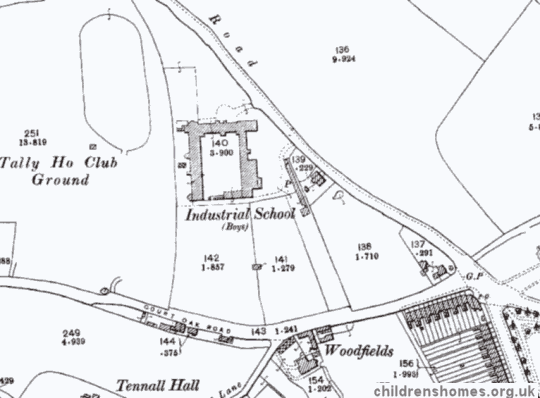
Birmingham Industrial School for Boys site, Harborne, c.1904.
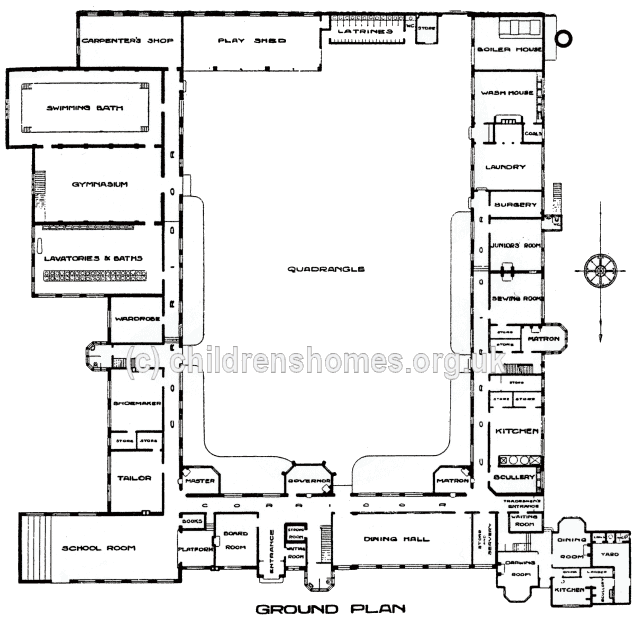
Birmingham Industrial School for Boys plan (north at bottom), Harborne, 1903.
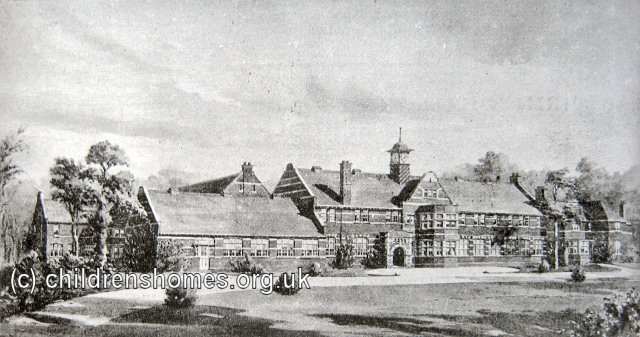
Birmingham Industrial School for Boys from the north-east, Harborne, c.1903. © Peter Higginbotham
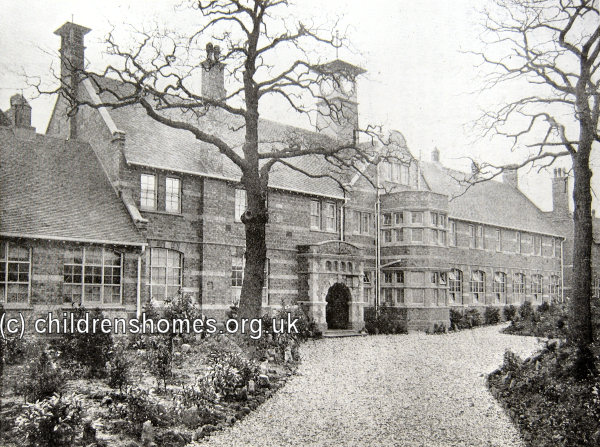
Birmingham Industrial School for Boys entrance, Harborne, c.1903. © Peter Higginbotham
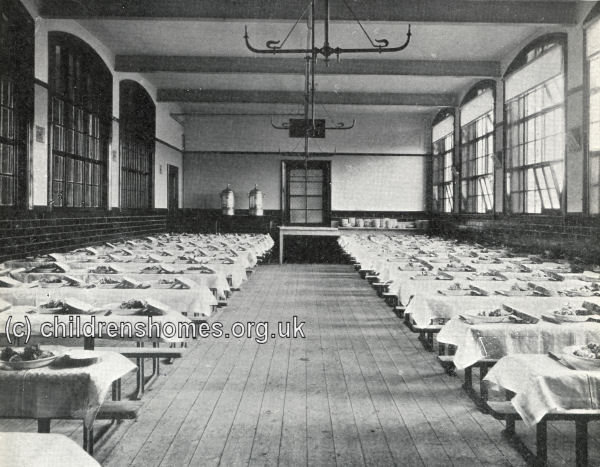
Dining hall at Birmingham Industrial School for Boys, Harborne, c.1903. © Peter Higginbotham
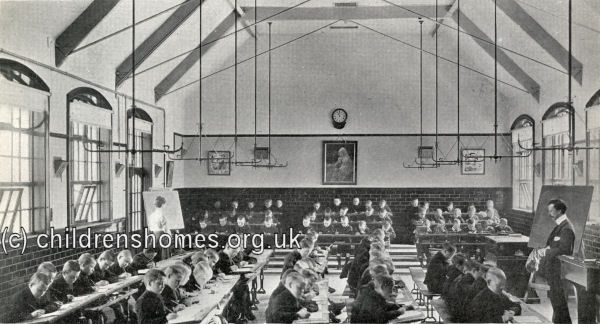
School room at Birmingham Industrial School for Boys, Harborne, c.1903. © Peter Higginbotham
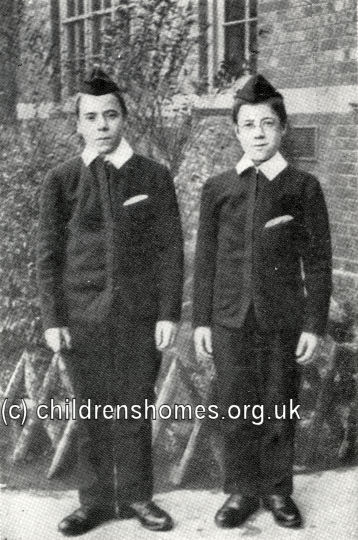
Sunday best uniform at Metalwork produced at Birmingham Industrial School for Boys, Harborne, c.1903. © Peter Higginbotham
An inspection in 1903 recorded classroom performance in singing (sol-fa), recitation, composition, mental arithmetic and geography as mostly 'good' or 'very fair'. Industrial training, as at Gem Street, included tailoring, shoe-making, manual instruction (woodwork) and drawing. The large garden at Harborne now allowed farm and horticultural work to be added. Junior boys were occupied in knitting and shirt making. Physical training included drill with dumb-bells or Indian clubs, and gymnastics. The inspector recommended that a separate towel be provided for each boy to prevent the spread of skin and eye conditions.
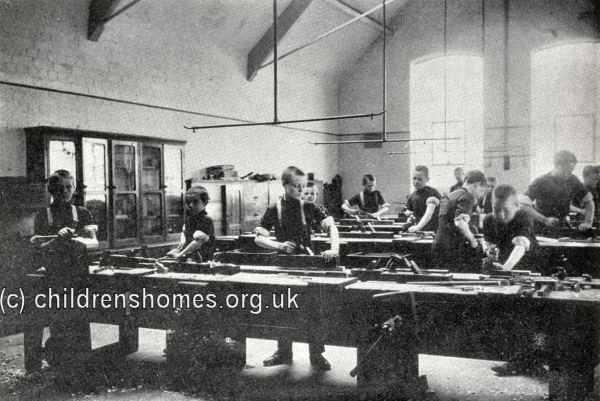
Carpenters' shop at Birmingham Industrial School for Boys, Harborne, c.1903. © Peter Higginbotham
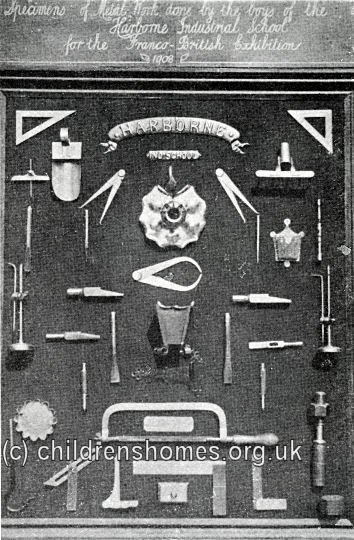
Metalwork produced at Birmingham Industrial School for Boys, Harborne, c.1903. © Peter Higginbotham
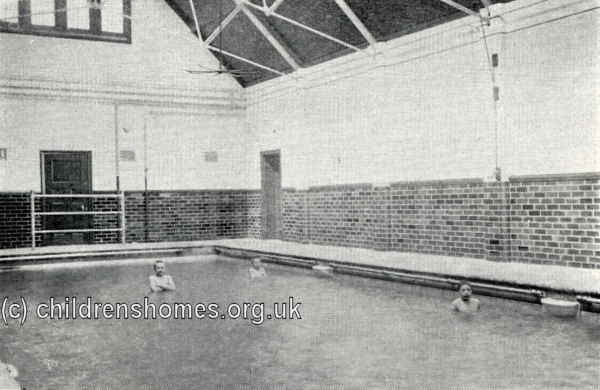
Swimming bath at Birmingham Industrial School for Boys, Harborne, c.1903. © Peter Higginbotham
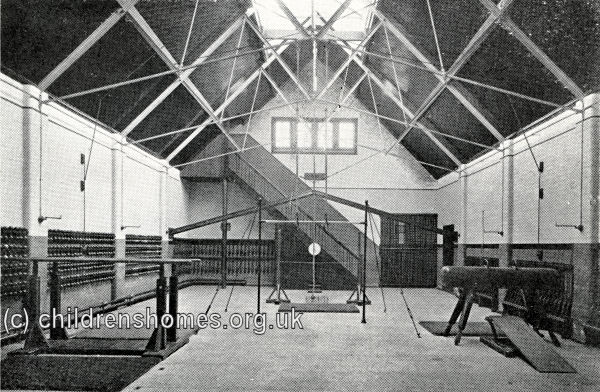
Gymnasium at Birmingham Industrial School for Boys, Harborne, c.1903. © Peter Higginbotham
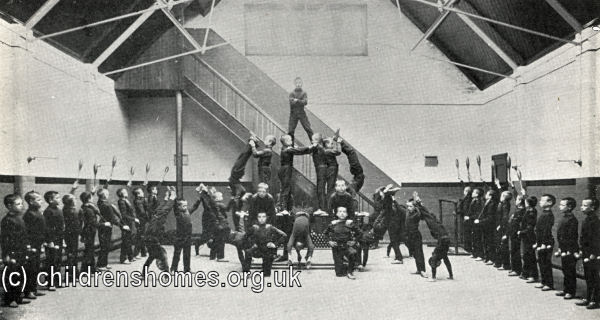
Gymnastic display at Birmingham Industrial School for Boys, Harborne, c.1903. © Peter Higginbotham
In the 1905-6 football season, the School's won the Home Office Inspectors' Midland District Cup.
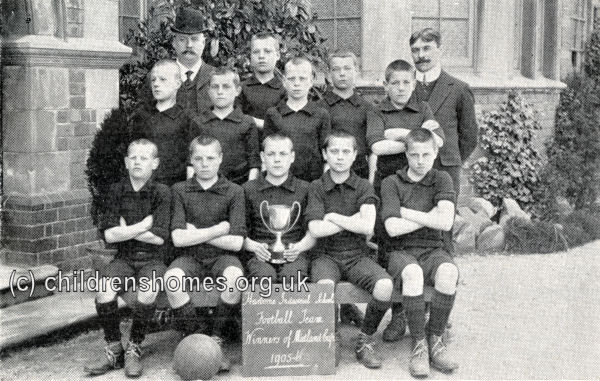
Gymnastic display at Birmingham Industrial School for Boys, Harborne, c.1903. © Peter Higginbotham
The School's band was also very successful. In 1908, a quartet of its players won the Gisborne Challenge Cup.
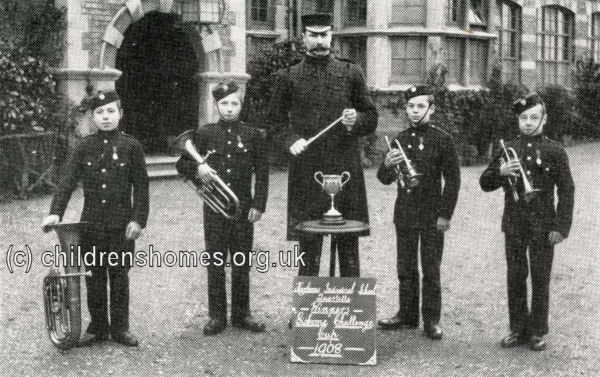
Champion quartet at Birmingham Industrial School for Boys, Harborne, 1908. © Peter Higginbotham
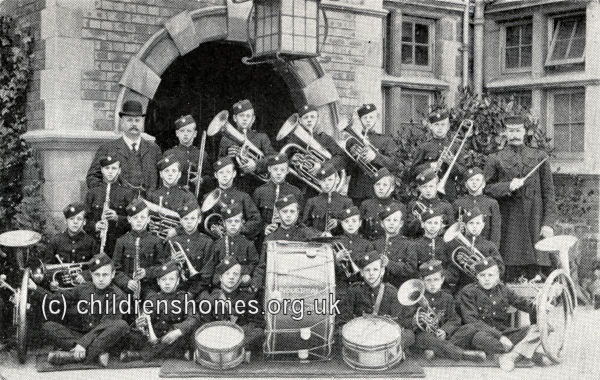
Boys' band at Birmingham Industrial School for Boys, Harborne, 1906. © Peter Higginbotham
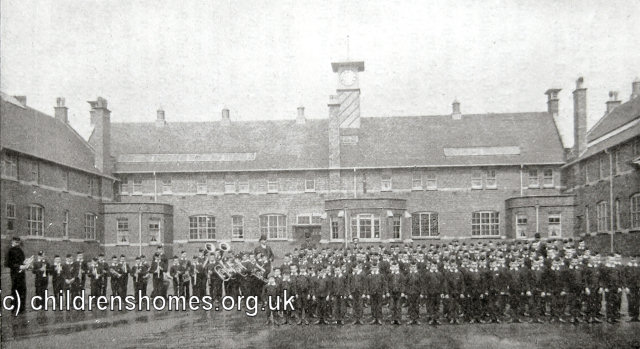
Birmingham Industrial School for Boys inner yard, Harborne, c.1903. © Peter Higginbotham
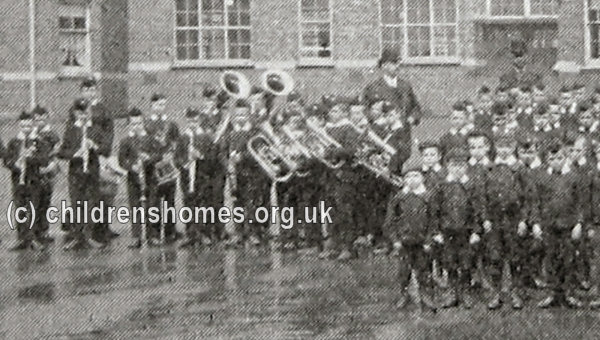
Birmingham Industrial School for Boys (detail), Harborne, c.1903. © Peter Higginbotham
In 1907, a portion of land was purchase adjoining the west side of the School and laid down as garden, orchard and poultry run. Eighteen boys worked in the garden, and two of these assisted with the poultry. A large number of the boys went to work with Welsh farmers after leaving the School. A large class of senior boys was attending the Metal Working Centre at Clarke Street, Birmingham. The School now had its own miniature rifle range. In September, 1910, a boy died as a result of an accident at the rifle range, and another through an accident on the football field. The verdict of the coroner's jury in both cases was 'accidental death'.
in 1923, Mr J.H.F. Channing was appointed superintendent, a post he was to hold until 1946.
In 1925, the School was renamed the Ansell School, in honour of Mr Joseph Ansell who had directed its Management Committee from 1907 to 1924. Ansell was also the President of the Aston Villa Football Club.
In April 1932, the School's official capacity was reduced to 1430 places. The following year, Ansell became an Approved School, one of the new institutions introduced by the 1933 Children and Young Persons Act to replace the existing system of Reformatories and Industrial Schools. The premises now accommodated up to 130 Junior Boys aged under thirteen at their date of admission.
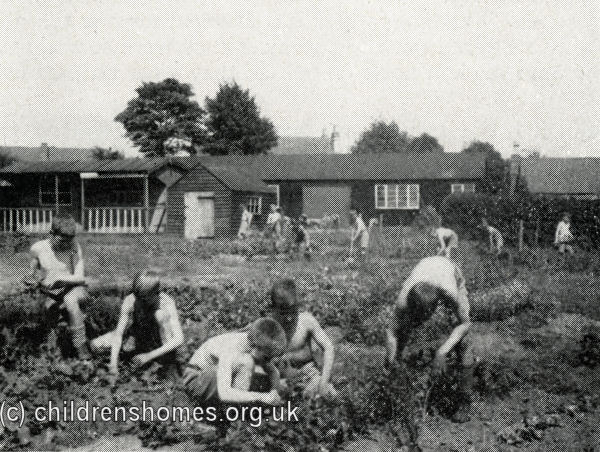
Gardening at Tennal Approved School, Harborne. © Peter Higginbotham
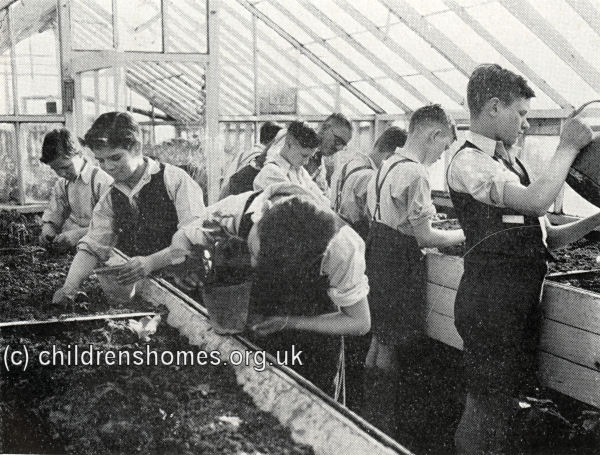
Greenhouse work at Tennal Approved School, Harborne. © Peter Higginbotham
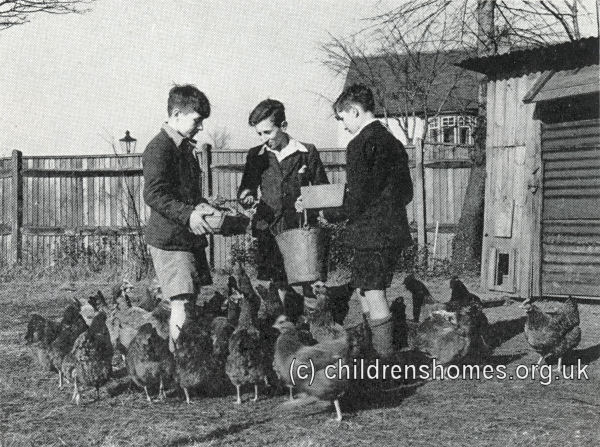
Feeding hens at Tennal Approved School, Harborne. © Peter Higginbotham
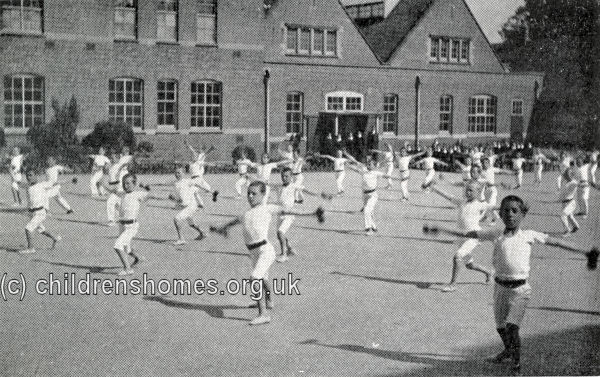
Exercise class at Tennal Approved School, Harborne. © Peter Higginbotham
In 1938, the establishment was renamed Tennal School — derived from Tennall Hall, a house which had once stood in the vicinity. In August, 1939, just prior to the outbreak of the Second World War, the School was briefly evacuated to Bourne, in Lincolnshire. However, it returned to Birmingham in January, 1940, and remained at Harborne for the rest of the war.
Following Mr Channing's retirement in 1946, Mr H. Heathcote was appointed as what was now referred to as the School's Headmaster, with Mrs Heathcote as matron. Under their tenure, a number of changes were introduced:
- The Mark system, whereby rewards were given for good behaviour, was revised. Boys were paid more (the top rate rising from 8d per week to 1s. 8d. per week) and they were allowed to handle their money.
- Wireless programmes were now relayed over loudspeakers to dormitories. On Saturday evenings, Mr Heathcote could also broadcast a bedtime story to the boys.
- Staff versus School cricket and football matches now took place.
- Morning assembly now took the form of a short service with prayers.
- Regular boxing classes took place.
- A School Council mainly composed of boys was formed
- An Angora rabbit company company was formed in which 15 boys each had 5/- shares and hoped to manage the company so that the shares would show a profit.
- A pig-sty was built.
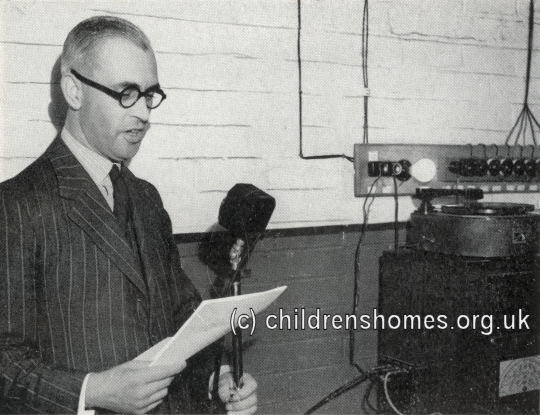
Mr Heathcote broadcasts a story at Tennal Approved School, Harborne. © Peter Higginbotham
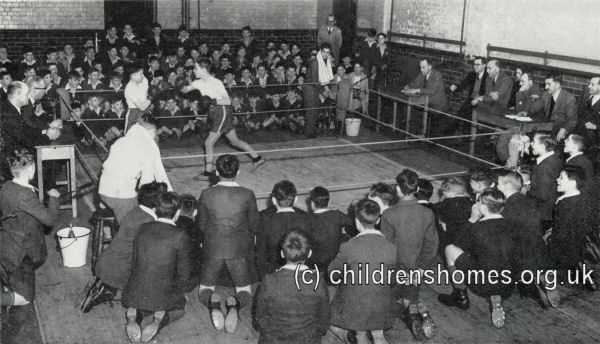
Boxing at Tennal Approved School, Harborne. © Peter Higginbotham
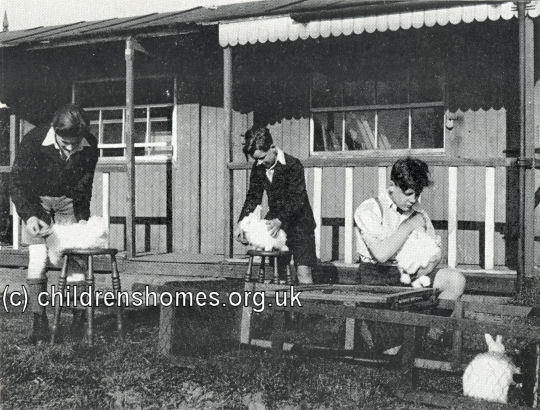
Angora Rabbit Company at Tennal Approved School, Harborne. © Peter Higginbotham

Angora Rabbit Company at Tennal Approved School, Harborne. © Peter Higginbotham
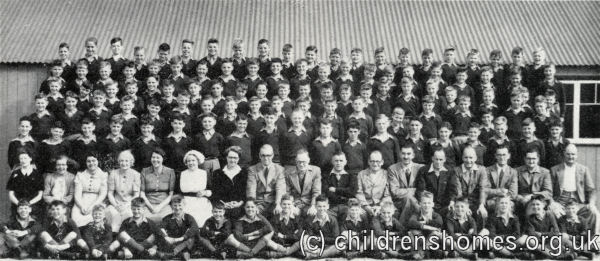
Visit to Rhyl by boys and staff at Tennal Approved School, Harborne. © Peter Higginbotham
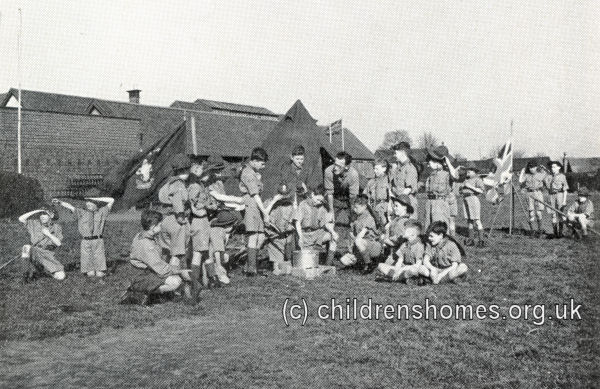
Scout camp at Tennal Approved School, Harborne. © Peter Higginbotham
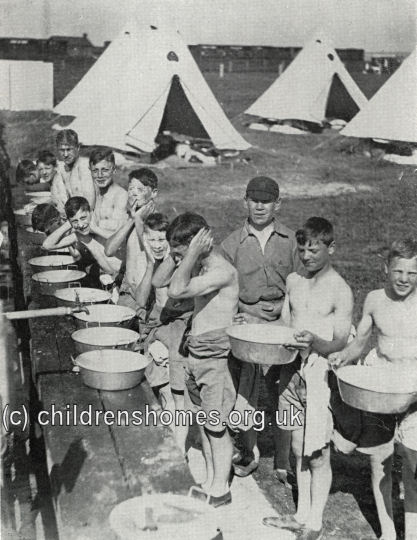
Campsite washing at Tennal Approved School, Harborne. © Peter Higginbotham
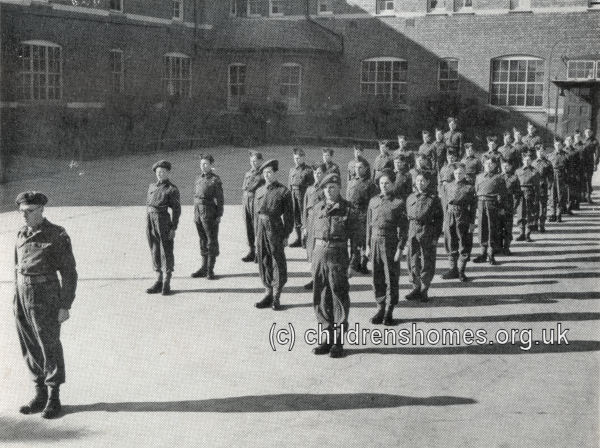
Cadet corps at Tennal Approved School, Harborne. © Peter Higginbotham
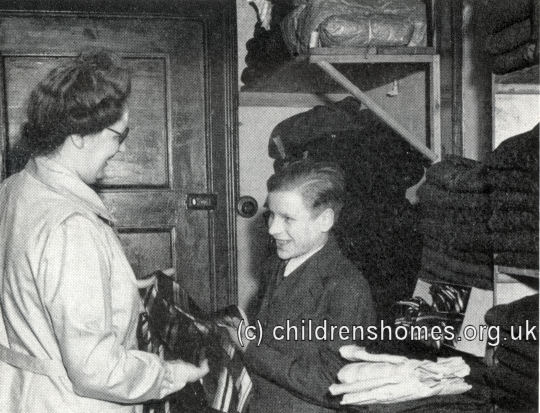
Leaver choosing clothes at Tennal Approved School, Harborne. © Peter Higginbotham
The School premises were substantially extended in the 1950s and 1960s with new blocks being built at the north of the site.
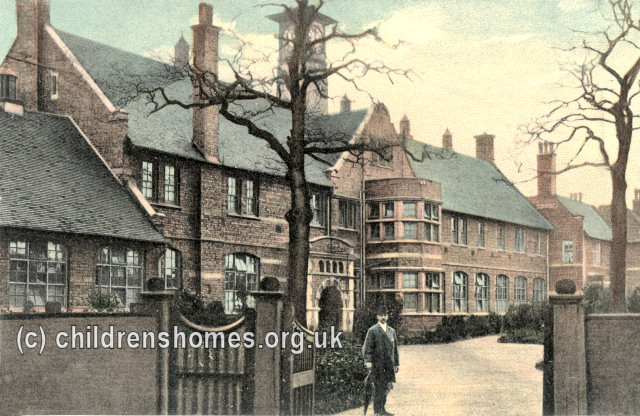
Birmingham Industrial School for Boys entrance, Harborne, c.1903. © Peter Higginbotham
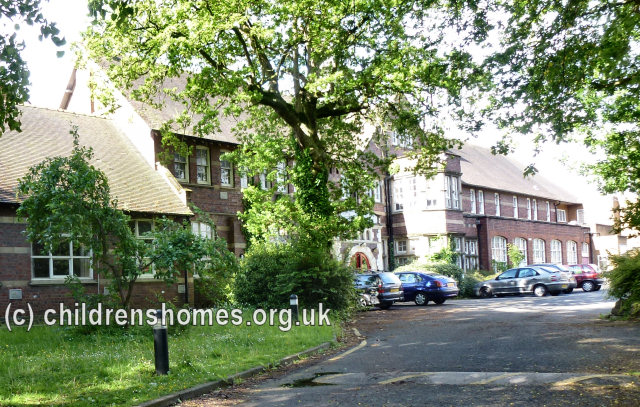
Birmingham Industrial School for Boys, Harborne, 2013. © Peter Higginbotham
In 1971, the Tennal Assessment Centre was opened at the site.
In 1974, the School became a Community Home with Education (CHE) under the control of Birmingham County Borough Council.
After the Tennal Community Home closed in 1984, the site at 74 Balden Road was taken over by the Martineau Teachers' Centre. Following the relocation of the Centre's offices in 2013, the council decided to allow the site to be redeveloped for housing, with demolition of all the buildings except the clock-tower block.
Former Martineau Teachers' Centre
Staff
Superintendents:
- 1848-1868 D. Thomas
- 1868-1869 W.F. Crook
- 1869-1872 T.G. May
- 1872-1876 C. Horth
- 1878-1879 R. Hind
- 1879-1880 J.H. Dove
- 1880-1885 G. Wass
- 1885-1923 S.P.T. Kirk
Headmasters:
- 1923-1946 J.H. Channing
- 1946-c.1973 H. Heathcote
Records
Note: many repositories impose a closure period of up to 100 years for records identifying individuals. Before travelling a long distance, always check that the records you want to consult will be available.
- Birmingham Archives and Heritage Service, Library of Birmingham, Centenary Square, Broad Street, Birmingham B1 2ND. Has extensive holdings covering both Gem Street and Harborne sites including: Annual reports (1870-1916); General Committee and Annual Meeting minute book (1847-1902); Governors' Meetings minute books (1903-74, plus index); Registers of inmates (1868-1939); Initial register (1940-53); Admission and progress register (1953-71); Discharge book (1882-1933); After-care records (1933-44); Records of discharges (1944-62); Discharge and after-care records (1962-74); Discharge and after-care register (1976-82); Register of voluntary inmates (1904-33); Monthly record of admissions and discharges (1938-47); Record of admissions, licences, discharges etc. (1961-68); Tennal Assessment Centre daily records of admissions and discharges (1971-79); Quarterly record of boys on licence or under supervision who have committed offences (1944-58); Approved Schools Licensing Registers (1944-70); Daily record of absconders (1964-73); Absconders books (1971-79); Punishment report book (1910-33); Schoolroom punishment record (1934-69); Record of additional measures of control (1976-83); Mark book (1931-44); Schoolroom admission book (1912-43); Medical record register (1915-30, plus index); Log books (1897-1915, 1935-1936); School camp records (1923-64); Staff records; Photographs; Plans; Rules and regulations; Tennal School magazine; Visitors' book (1892-1984); etc.
- Warwickshire County Record Office, Priory Park, Cape Road, Warwick CV34 4JS. Has Reports of the Chairman of the Governors (1904-66).
Bibliography
- Higginbotham, Peter Children's Homes: A History of Institutional Care for Britain's Young (2017, Pen & Sword)
- Mahood, Linda Policing Gender, Class and Family: Britain, 1850-1940 (1995, Univeristy of Alberta Press)
- Prahms, Wendy Newcastle Ragged and Industrial School (2006, The History Press)
- Higginbotham, Peter Children's Homes: A History of Institutional Care for Britain's Young (2017, Pen & Sword)
- Hyland,Jim Yesterday's Answers: Yesterday's Answers: Development and Decline of Schools for Young Offenders (1993, Whiting and Birch)
- Millham, S, Bullock, R, and Cherrett, P After Grace — Teeth: a comparative study of the residential experience of boys in Approved Schools (1975, Chaucer Publishing)
Links
- None noted at present.
Except where indicated, this page () © Peter Higginbotham. Contents may not be reproduced without permission.


